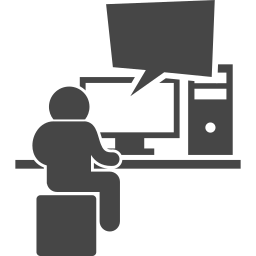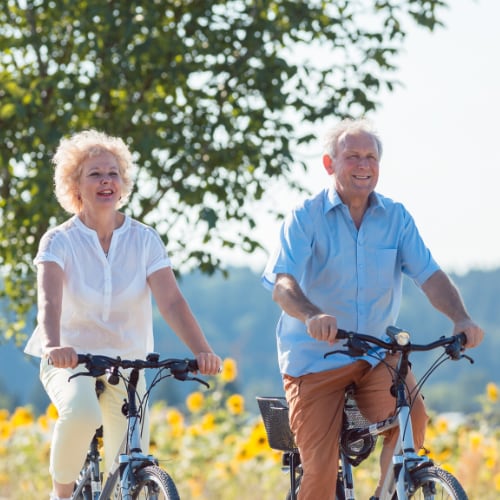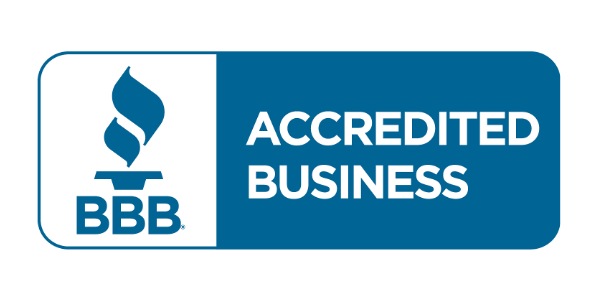 Why We Move: Discovering the Motivation for a Healthier Life
Why We Move: Discovering the Motivation for a Healthier Life
Why We Move: Discovering the Motivation for a Healthier Life

-
Main Ideas
Learning Objective
Understand the biological and psychological barriers to exercise and how discipline can overcome instinctive resistance to physical activity.
Behavioral Objective
Develop a consistent exercise routine by starting small, focusing on progress, and prioritizing discipline over fleeting motivation.
Key Thought
Motivation follows action-discipline is the key to embracing movement and unlocking health and vitality.
-
Main Ideas
Learning Objective
Understand the biological and psychological barriers to exercise and how discipline can overcome instinctive resistance to physical activity.
Behavioral Objective
Develop a consistent exercise routine by starting small, focusing on progress, and prioritizing discipline over fleeting motivation.
Key Thought
Motivation follows action-discipline is the key to embracing movement and unlocking health and vitality.
-
Terms
- Chronic Inflammation
noun
Long-term, low-grade inflammation that persists over time and contributes to developing chronic diseases, such as diabetes and heart disease.
- Discipline
noun
The ability to take consistent, intentional actions toward a goal, even when motivation is absent.
- Instinct
noun
A natural, often subconscious, behavior or response developed over generations to support survival.
- Moderate Intensity Exercise
noun
Physical activity that increases the heart rate and breathing but allows for conversation, such as fast walking or cycling on a flat road.
- Motivation
noun
The internal or external drive that prompts an individual to take action toward achieving a goal or satisfying a need.
- Self-Coercion
noun
The act of using discipline to force oneself into taking action, such as exercising, when motivation is lacking.
- Vigorous-Intensity Activity
noun
Physical activity that significantly raises heart rate and breathing, making it difficult to speak full sentences without pausing for breath.
-
Terms
- Chronic Inflammation
noun
Long-term, low-grade inflammation that persists over time and contributes to developing chronic diseases, such as diabetes and heart disease.
- Discipline
noun
The ability to take consistent, intentional actions toward a goal, even when motivation is absent.
- Instinct
noun
A natural, often subconscious, behavior or response developed over generations to support survival.
- Moderate Intensity Exercise
noun
Physical activity that increases the heart rate and breathing but allows for conversation, such as fast walking or cycling on a flat road.
- Motivation
noun
The internal or external drive that prompts an individual to take action toward achieving a goal or satisfying a need.
- Self-Coercion
noun
The act of using discipline to force oneself into taking action, such as exercising, when motivation is lacking.
- Vigorous-Intensity Activity
noun
Physical activity that significantly raises heart rate and breathing, making it difficult to speak full sentences without pausing for breath.
Introduction
Instincts don't always align with what's best for our health. Over generations, human behaviors have evolved to prioritize survival, often leading to sedentary tendencies in today's world of abundance. Yet, our modern needs demand movement for a healthy, fulfilling life. This topic explores the science behind our reluctance to exercise, the impact of ingrained instincts, and practical strategies to cultivate discipline and motivation for physical activity.
Why Do We Struggle with Exercise?
Most people know that exercise is essential for wellness, yet only about 20% of Americans meet the recommended physical activity guidelines.1 Why the disconnect? The answer lies in our evolutionary past. For early humans, conserving energy and avoiding unnecessary exertion were survival strategies. In our current environment of calorie abundance and reduced physical demands, these instincts no longer serve us well. Instead, they hinder our ability to embrace the movement we need to thrive.
The Guidelines for Physical Activity
To maintain health, experts recommend the following weekly exercise options:
Option One:
- At least 2.5 hours of moderate-intensity aerobic activity, such as brisk walking, water aerobics, or doubles tennis.
- Two weight training sessions targeting all major muscle groups, including legs, hips, back, abdomen, chest, shoulders, and arms.
- Moderate-intensity activities must raise heart and breathing rates and last at least 10 minutes per session to count.
Option Two:
- At least 1.25 hours of vigorous-intensity aerobic activity, such as jogging, lap swimming, or singles tennis.
- Two weight training sessions targeting all major muscle groups.
- Vigorous activities make speaking in full sentences without pausing for breath difficult.
Why We Don't Feel Like Exercising
The Fat Storage Signal
Evolutionary biology suggests that stored fat sends a message to the body: stay sedentary and conserve energy. In calorie-scarce environments, this behavior supported survival. However, in today's world, it leads to inactivity, even when movement is crucial for health.
Chronic Inflammation's Role
Excess fat storage contributes to chronic inflammation. Overstretched fat cells release distress signals, triggering the body's healing response. This persistent inflammation reduces energy levels and reinforces sedentary habits, creating a cycle of inactivity.
Breaking the Cycle: Discipline Over Motivation
Waiting for the perfect moment of motivation to start exercising is a common pitfall. Motivation is fleeting and unreliable, but discipline provides a consistent foundation for success. Here's how to take control:
- Start Small: Begin with short, manageable workouts that feel achievable, such as a 10-minute walk.
- Create Routines: Schedule exercise into your day as a non-negotiable habit, like brushing your teeth.
- Focus on Progress: Celebrate small wins and improvements to build confidence and maintain momentum.
Coercion is Key
Struggling with starting and maintaining an exercise routine is normal. A lack of willpower isn't a personal failing; it's a biological challenge. Overcoming it requires intentional action-coercing yourself to move, even when you don't feel like it. The rewards, including improved energy, mood, and health, are worth the effort.
Final Thoughts
Exercise isn't just about fitness-it's about reclaiming control over your instincts and prioritizing your health. By understanding the barriers to movement and embracing discipline, you can create a sustainable routine that supports a healthier, more fulfilling life. Start small, stay consistent, and remember that motivation follows action, not vice versa.
Citations:
1 Centers for Disease Control and Prevention. (2013, May). One in five adults meet overall physical activity guidelines. Retrieved March 28, 2014, from http://www.cdc.gov/media/releases/2013/p0502-physical-activity.html
Overcoming Instincts with Action
Objective: Take the first step toward movement by recognizing and overcoming instinctual resistance.
- Identify a time of day when you feel least motivated to move.
- Set a timer for 5 minutes and commit to a simple activity like stretching or walking in place.
- Reflect on how you feel after completing the activity and note the small win in a journal.
10-Minute Bursts Challenge
Objective: Begin incorporating physical activity into your daily routine by using discipline rather than waiting for motivation.
- Commit to 10-minute bursts of exercise at least three times a day. Choose simple exercises like walking, push-ups, or jumping jacks.
- Mix up your routine with different activities like biking, swimming, or high-intensity interval training (HIIT) at least twice a week.
- Track your progress over the course of a week and note any changes in energy, mood, or motivation levels.
Build Your Exercise Routine
Objective: Cultivate self-discipline by removing reliance on spontaneous motivation for exercise.
- Create an exercise schedule that includes short daily activities you enjoy, such as walking or dancing. Stick to it for one week.
- Reflect on your experience in a journal: Did you have to push yourself? What worked, and what didn't?
- Identify any barriers and brainstorm ways to overcome them, such as setting reminders or finding a workout buddy.
Discover Your Why
Objective: Connect exercise with personal values to create a stronger sense of purpose.
- Write down three reasons why being physically active is important to you (e.g., spending quality time with family, reducing stress, improving long-term health).
- Choose one reason to focus on during your next workout or activity.
- Reflect on how this reason motivates you and how it impacts your experience during exercise.
Course Outline
![]() Session Expired from Inactivity
Session Expired from Inactivity
Do you want to?
9618 Jefferson Highway, Suite D-191
Baton Rouge LA 70809-9636
(888) 424-0032 |
support@supplementrelief.com
* Disclaimer: This page is available exclusively for SupplementRelief.com clients. None of the information on this website is intended to replace your relationship with your healthcare provider(s). Nothing should be considered medical advice. The information, knowledge, and experience shared on this website are the opinions of SupplementRelief.com. This site and its content are intended to enhance your knowledge base as YOU MAKE YOUR OWN HEALTHCARE DECISIONS in partnership with your qualified health professional.
* These statements have not been evaluated by the Food and Drug Administration. These products and services are not intended to diagnose, treat, cure, or prevent disease.
* There is NO GUARANTEE OF SPECIFIC RESULTS for the products or services offered, and the RESULTS CAN VARY for each individual. Any results claimed by our customers are based on individual experiences that are unique and cannot be guaranteed.
FirstFitness Nutrition and NuMedica may be promoted and sold on the internet ONLY by Authorized Resellers who have been approved by and have registered their website domain with these companies. They strictly prohibit, and actively monitor, the UNAUTHORIZED SALE or RESALE of their products in ALL online public shopping portals including Amazon, eBay, and others and into other countries. All products purchased in SupplementRelief.com are for PERSONAL USE ONLY and CANNOT BE RESOLD to others. Please report violations of Reseller Policy directly to FirstFitness Nutrition at 800.621.4348 and to NuMedica at 800.869.8100.
The content and photographs on this website are copyrighted or Licensed Material and may not be downloaded for other than personal use. Republication, retransmission, reproduction, or any other use of the content or photographs is prohibited. ©2010-2024 SupplementRelief.com.
Are you sure you want to remove this item?


